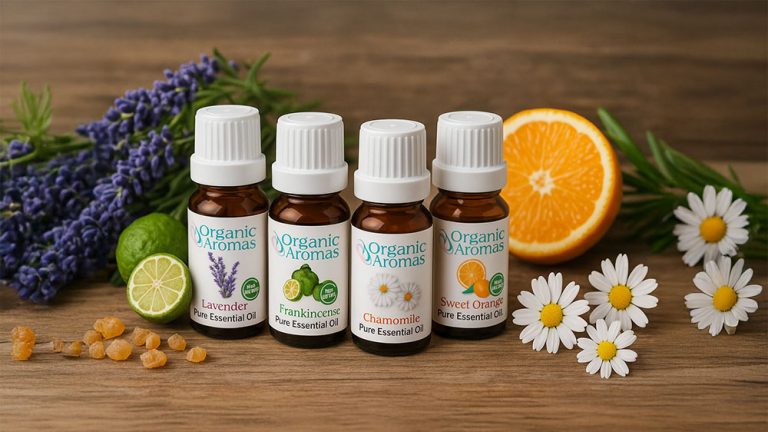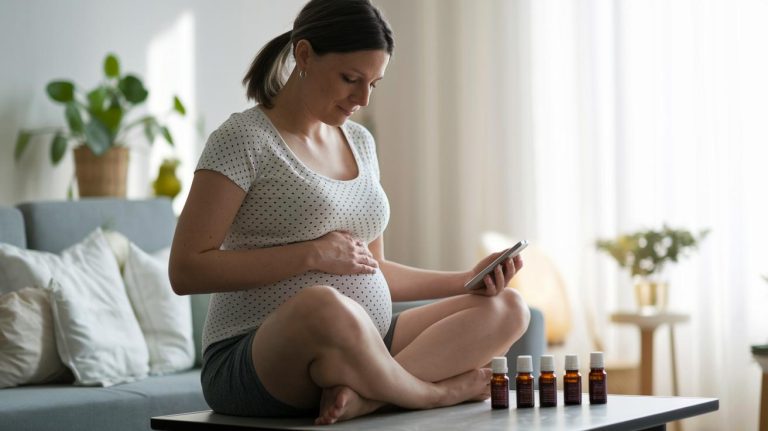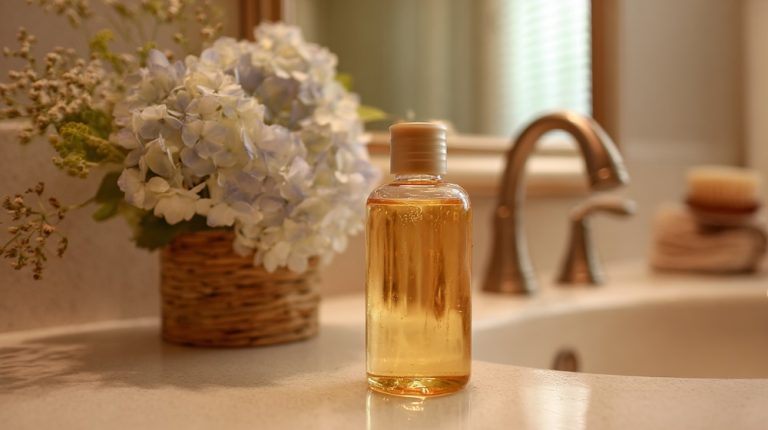5 How Many Drops of Essential Oil in 1 oz – Making Precise Blends
Have you ever mixed a roller blend and thought, wow, this is way too intense? You counted your drops, yet the aroma floods the room. At Organic Aromas we know drop math can sneak up. One ounce holds about 600 tiny beads (about 20 drops per milliliter), but every oil has its own viscosity (how thick or thin it is).
Thin oils glide out in quick trickles from narrow droppers, like a soft spring rain. Thicker oils, like jojoba or sweet almond, fall in gentle globs that feel bigger than a drop. And roller tops add their own twist, um, shifting drop size from one bottle to the next.
Here’s the thing. Getting the right drop count turns your blend from harsh to harmonious.
Ready? First we’ll look at common droppers. Then we’ll explore oil thickness. By the end, your balms, spritzes, and massage blends will smell just perfect.
Essential Oil Drops per 1 Ounce: Exact Count Overview

Most blending recipes go by roughly 20 drops per milliliter. So, since an ounce holds about 30 milliliters, you end up with around 600 drops in a full ounce. It’s a quick way to scale your roll-ons, massage blends, or room sprays.
But drop size actually shifts with oil viscosity (how thick or runny an oil is) and your dropper’s design. Ever noticed how rich patchouli feels like little beads, while a thin oil slips out in tiny drips? That means thick oils might give you closer to 550 drops per ounce, while thinner oils or narrow-neck droppers can push you back up toward 600. Knowing this range helps you keep each batch consistent and perfectly balanced.
- Standard conversion: 20 drops/ml → 600 drops/oz
- Typical range: 550–600 drops per ounce
- Use the lower end (around 550) for thick, viscous oils or wide openings
- Use the upper end (near 600) for thin oils and precision dosing
Fine-tune your blends with confidence.
Drop Size Variability Factors for Essential Oils in 1 Ounce
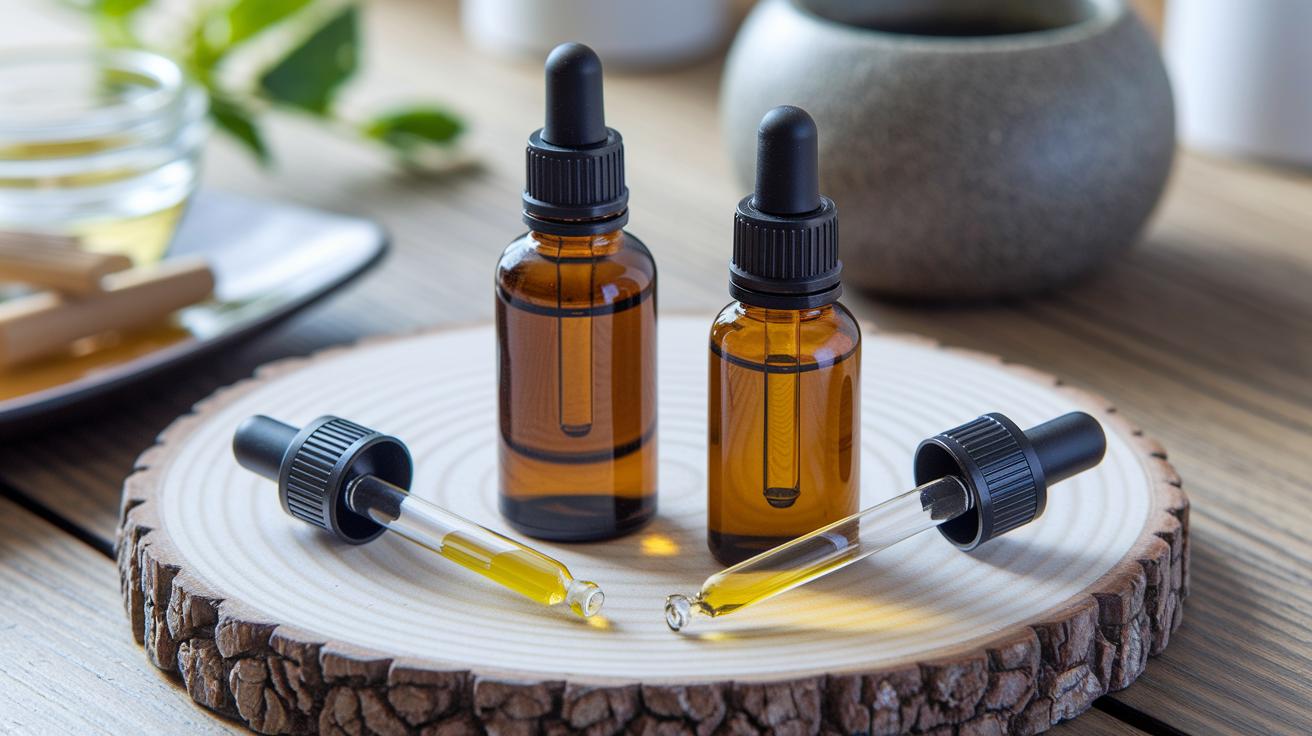
Drop size can vary from oil to oil and dropper to dropper. Have you noticed how thick sandalwood slides out in big beads, while citrus oils trickle as tiny droplets? When you know what shifts your drop count, you can craft blends that hit the mark every time. No more guessing.
Viscosity and Drop Volume
Viscosity (how thick or runny an oil is) plays a big part in drop size. Thick oils like patchouli or vetiver tend to form larger beads, so you’ll get fewer drops per ounce. Thin oils such as eucalyptus or lemon run almost like water, giving you more drops in the same amount. It’s amazing how a simple swirl can change your whole blend.
Dropper Orifice and Design
The size of the dropper opening also changes droplet size. A wider tip releases big drops, while a tiny tip delivers small, steady drips. Glass droppers usually feel smooth, but plastic ones can wear down over time and start dripping oddly. Tiny tip cracks or chips can really shift your recipes.
Here are a few more factors to watch:
• Temperature. Warmer oils flow faster, so drops come out quicker.
• Bottle angle. Tilting the bottle can speed up or slow down the drip.
• Pressure. Squeezing the dropper too hard ups the drop size.
• Tip wear. Small cracks or chips alter the oil’s path.
Paying attention to these details helps keep each ounce reliable for your recipes. Breathe. Blend. Enjoy.
Quick Reference
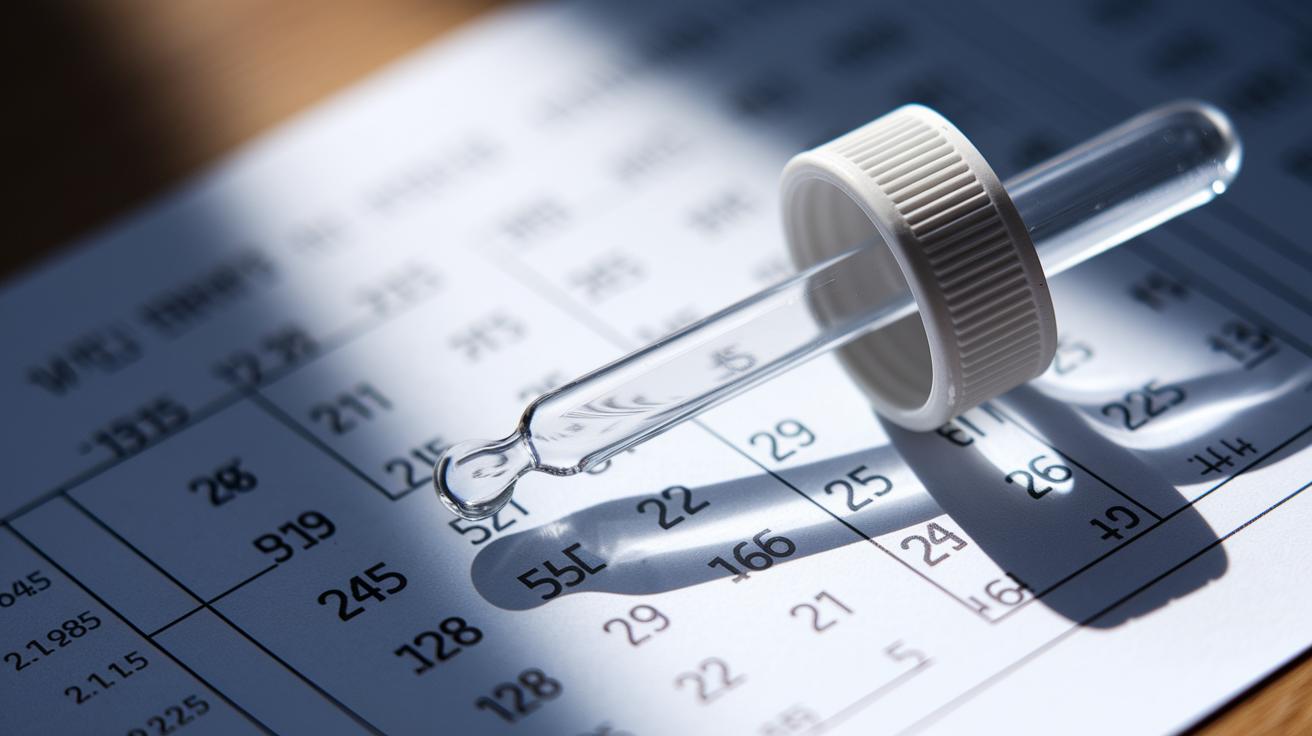
Need a fast drop-to-volume cheat sheet? You’ll find about 20 drops in one milliliter (ml), which means a 1-ounce bottle holds roughly 600 drops. Check out the breakdown below.
| Volume | Milliliters (ml) | Drops |
|---|---|---|
| 1 milliliter | 1 | 20 |
| 1 teaspoon (about 5 ml) | 5 | 100 |
| half ounce (about 15 ml) | 15 | 300 |
| 1 ounce (about 30 ml) | 30 | 600 |
5 how many drops of essential oil in 1 oz Precise Blends
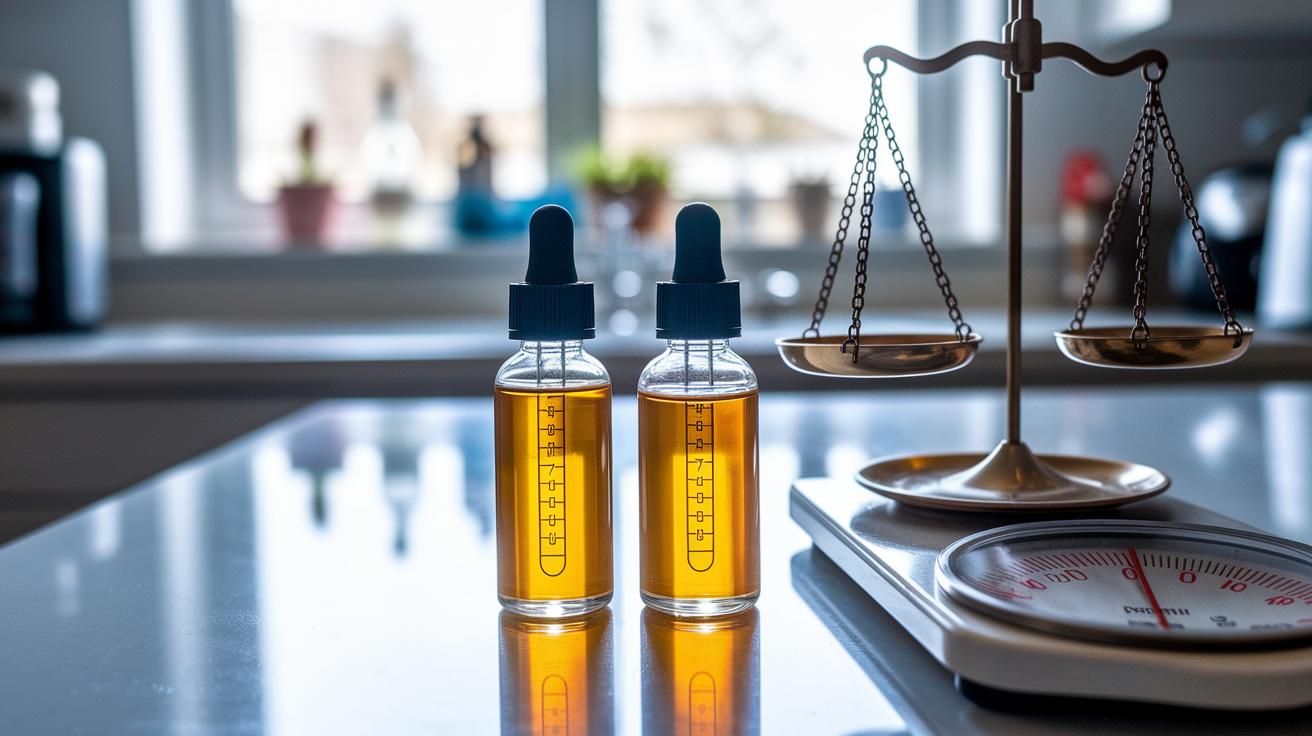
Getting your drop count just right is the secret to a balanced aroma and a skin-safe blend. A single drop can shift the strength or the feel of your mix. So taking a moment to measure carefully pays off in consistency and confidence. Have you noticed how a tiny change can ripple through your scent?
- Pick a dropper or pipette (a thin glass tube for measuring liquids) with clear volume marks. A snug glass dropper gives steadier drips than a loose plastic tip.
- Calibrate by squeezing out 20 drops into a small glass and measuring the amount. This quick test shows if your drop size matches the 20 drops per ml guideline.
- Hold the bottle upright and gently wipe the tip between drips. Count each drop slowly so you hit your target number for every ounce.
- Jot down your details in a little notebook: date, carrier oil (a plant-based oil that dilutes essential oils) amount, number of drops, and oil name. A simple log makes each batch repeatable.
- Rinse and dry your dropper after each use. Check for cracks or leftover oil that could change your drop size over time.
Follow these steps and you’ll enjoy consistent drop counts, safe blends, and a perfect aroma every time.
Proper Dilution Practices Using Drops per 1 Ounce Carrier Oil
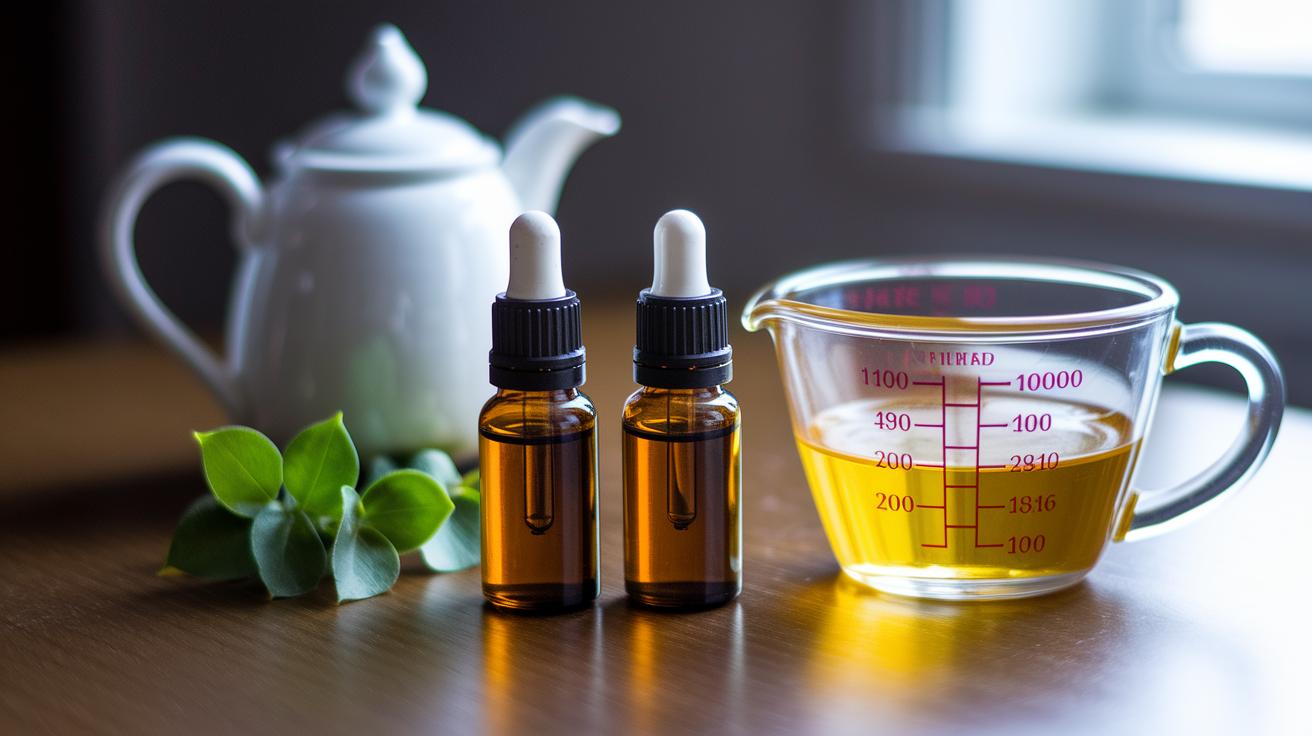
At Organic Aromas, we know diluting essential oils in a carrier oil (a gentle oil that carries the aroma) is more than stretching your precious drops. It’s a safety step that keeps the scent drifting softly, room after room. Have you ever felt a sting from pure oils on your skin? Dilution helps you avoid that.
It slows evaporation, shields skin from irritation, and makes sure each drop brings the right effect: calm, focus, or relief. So if you’re blending a massage oil or a facial serum, sticking to trusted dilution ratios lands you right between potency and comfort.
- 1% dilution (gentle support): 6 drops per 1 ounce of carrier oil
- 2% dilution (everyday wellness): 12 drops per 1 ounce of carrier oil
- 5% dilution (targeted relief): 30 drops per 1 ounce of carrier oil
- 10% dilution (acute concerns): 60 drops per 1 ounce of carrier oil
Age-Specific Dilutions
| Age Group | Dilution % | Approximate Drops per 1 oz |
|---|---|---|
| Infants (0–6 months) | 0.1–0.2% | 1 drop |
| Children (6 months–12 years) | 1% | 6 drops |
| Adults | 2–10% | 12–60 drops |
Patch testing makes sure your blend won’t cause redness or itching. First, apply one or two drops of your diluted mix behind your ear or inside your forearm. Then cover it with a bandage and wait 24 hours. If you notice any redness or itchiness, wash it off and um, give your skin time to rest.
If you plan to use blends long term or with sensitive folks, like pregnant women or people on medications, consult a qualified aromatherapist or healthcare provider. For a quick visual guide, see the essential oil dilution chart.
DIY Essential Oil Blends in 1 Ounce: Drop Ratios and Recipes
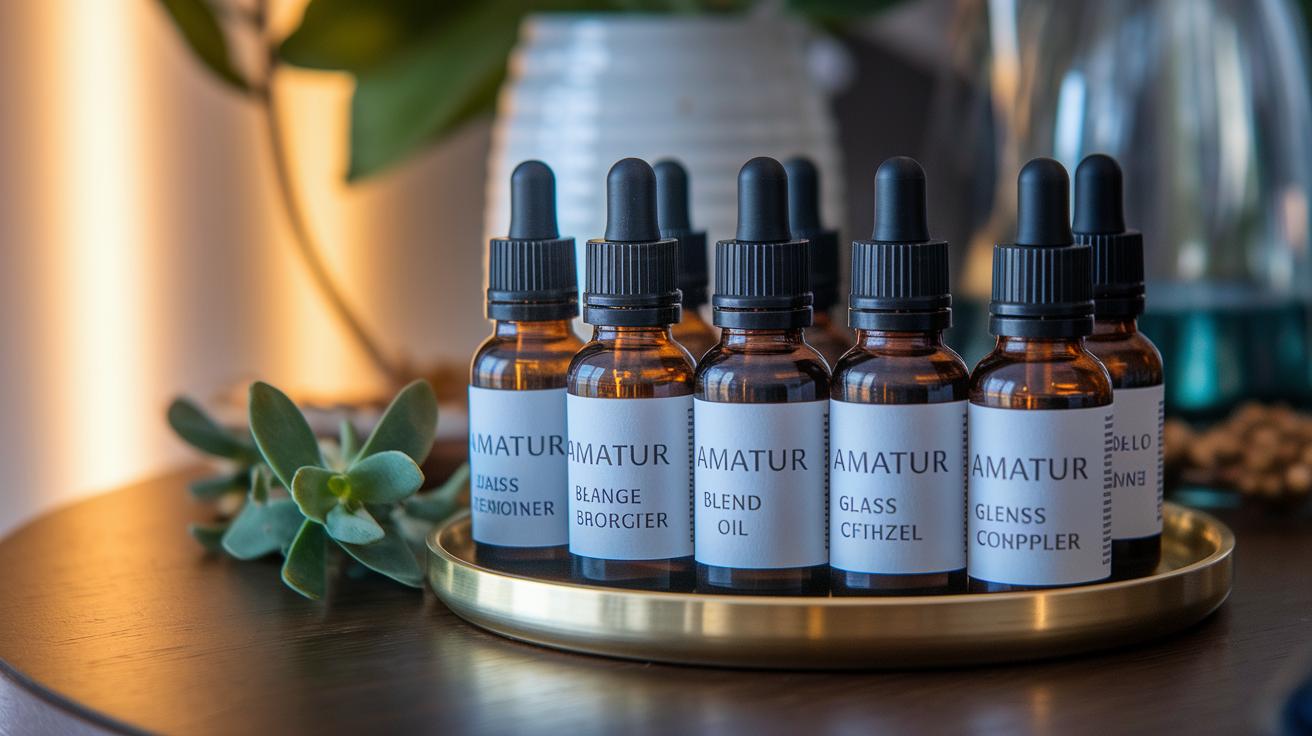
Ready to craft your own aroma masterpiece? Using a 1-ounce carrier oil (carrier oil: a base that carries essential oils into your skin) – like Organic Aromas Jojoba or Sweet Almond – gives you a simple canvas. We stick to a gentle 1.5 to 3 percent dilution (how much essential oil vs. carrier) so the scent feels soothing, not strong. Then you can tweak each note to suit your day.
Want more brightness? Add a drop or two of bergamot for a sunny twist. Need extra calm? Boost chamomile to melt away stress. It’s all up to your nose and your mood.
Here are three easy recipes you can blend into a 1-ounce carrier oil:
| Blend Name | Essential Oils & Drops | Dilution % |
|---|---|---|
| Relaxation Blend | 12 drops lavender, 8 drops bergamot, 6 drops frankincense | 2% |
| Immune Support | 10 drops lemon, 6 drops tea tree, 4 drops eucalyptus | 1.5% |
| Sleep Aid | 15 drops chamomile, 10 drops cedarwood, 5 drops vetiver | 3% |
Feel free to shift each oil by a drop or two until it feels just right to your nose. Thicker oils, like frankincense (tree resin oil), drop slower and can change your mix, so do a quick dropper test first. Keep a little log for each recipe – date, oil amounts, and what it smelled like. Store your bottle in a cool, dark place so the scent stays true.
Always patch-test a drop behind your ear or inner arm to make sure it’s skin-friendly. Then sit back and breathe it in. Share your favorite blend with friends or keep it all to yourself. You’re the boss of these drops.
Making Precise Blends – How Many Drops of Essential Oil in 1 oz
We jumped right into drop counts, showing how 20 drops per ml gives about 550–600 drops in an ounce.
Then we explored factors like oil thickness and dropper design that change each drop’s size. Next came the simple conversion formula and chart so you can plan mixes with ease.
We also shared hands-on tips for counting every drop, safe dilution rates, and a few DIY blends to try.
Now you know exactly how many drops of essential oil in 1 oz make your home spa moments glow. Enjoy the calm!
FAQ
How many drops of essential oil are in 1 mL?
The number of drops in 1 mL of essential oil is typically around 20, though viscosity and dropper design can cause slight variation.
How many drops of essential oil are in 5 mL?
A 5 mL essential oil bottle holds about 100 drops based on 20 drops per mL, though oil thickness or dropper size can shift that count by a few drops.
How many drops of essential oil are in 10 mL?
The number of drops in 10 mL of essential oil is around 200, following the 20-drops-per-mL guideline and allowing for minor drop size differences.
How many drops of essential oil are in 15 mL?
A 15 mL bottle typically contains about 300 drops, using the standard 20 drops per mL measurement, with slight variation from dropper tip or oil thickness.
How many drops of essential oil are in 30 mL?
A 30 mL essential oil bottle usually holds about 600 drops, based on 20 drops per mL, with small adjustments for viscosity or dropper design.
How many drops of essential oil are in a 4 oz bottle?
A 4 oz (120 mL) essential oil bottle contains roughly 2,400 drops, using the 20-drops-per-mL rule and allowing for slight shifts from oil thickness or dropper size.
How many drops of essential oil equal 1 teaspoon?
One teaspoon (5 mL) of essential oil equals about 100 drops, based on the standard 20 drops per mL conversion.
How many drops of essential oil go into 1 oz of carrier oil?
The number of essential oil drops in 1 oz (30 mL) of carrier oil is about 600 drops, matching the 20-drops-per-mL conversion for precise blending.
How many drops of essential oil are in 100 mL of carrier oil?
A 100 mL carrier oil volume holds approximately 2,000 drops, using the 20-drops-per-mL guideline and allowing for slight drop size variation.
What volume does 30 drops of essential oil represent?
Thirty drops of essential oil measure about 1.5 mL, based on the standard 20 drops per mL assumption, with minor variance possible by dropper design.



